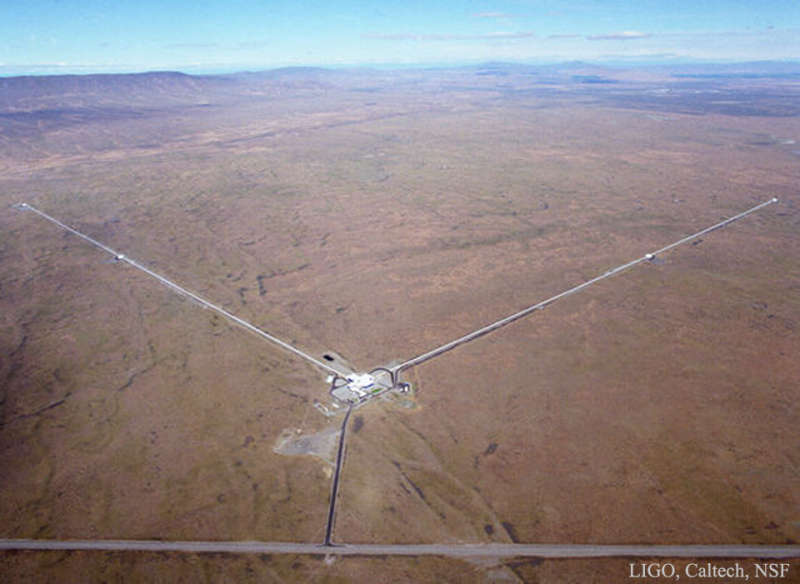Explanation: Accelerate a charge and you'll get electromagnetic radiation: light. But accelerate any mass and you'll get gravitational radiation. Light is seen all the time, but, so far, a confirmed direct detection of gravitational radiation has been elusive. When absorbed, gravitational waves create a tiny symmetric jiggle similar to squashing a rubber ball and letting go quickly. Separated detectors can be used to discern gravitational waves from everyday bumps. Powerful astronomical sources of gravitational radiation would coincidentally jiggle even detectors on opposite ends of the Earth. Pictured here are the four-kilometer-long arms of one such detector: the LIGO Hanford Observatory in Washington state, USA. Together with its sister interferometer in Louisiana, these gravitational wave detectors continue to be upgraded and are now more sensitive than ever.
1999 2000 2001 2002 2003 2004 2005 2006 2007 2008 2009 2010 2011 2012 2013 2014 2015 2016 2017 2018 2019 2020 2021 2022 2023 2024 2025 |
Январь Февраль Март Апрель Май Июнь Июль Август Сентябрь Октябрь Ноябрь Декабрь |
NASA Web Site Statements, Warnings, and Disclaimers
NASA Official: Jay Norris. Specific rights apply.
A service of: LHEA at NASA / GSFC
& Michigan Tech. U.
|
Публикации с ключевыми словами:
gravitational radiation - LIGO - обсерватория ЛИГО - гравитационные волны
Публикации со словами: gravitational radiation - LIGO - обсерватория ЛИГО - гравитационные волны | |
См. также:
Все публикации на ту же тему >> | |
